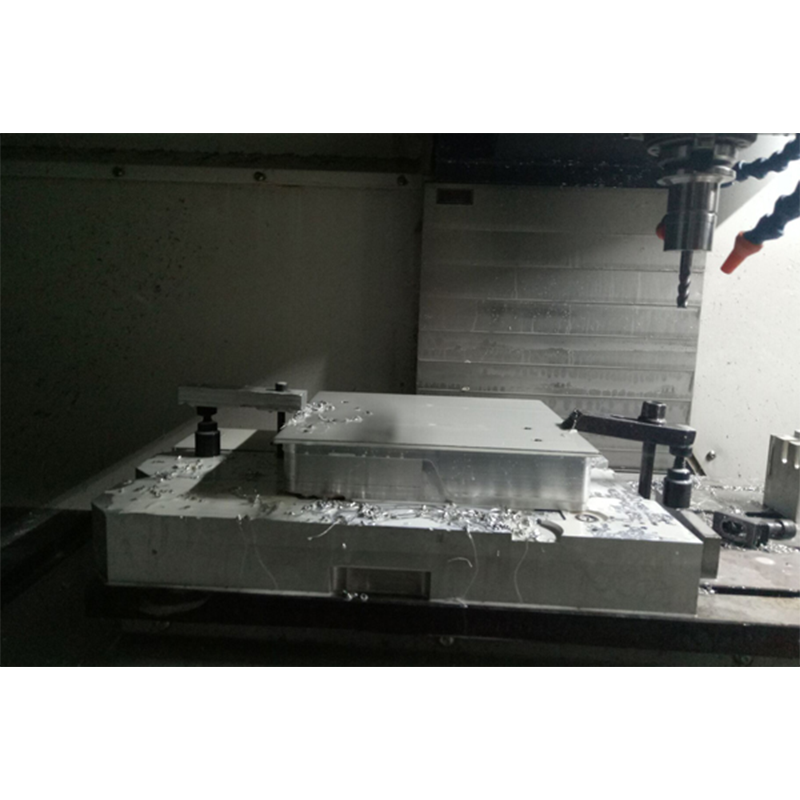The Role of CNC Machined Parts in Aerospace Engineering
The Critical Importance of CNC Machined Parts in Aerospace Engineering
Achieving Micron-Level Precision for Flight Safety
Getting things just right matters a lot in aerospace engineering. We're talking about microns here folks, because even tiny mistakes can mess up safety and how well planes work. Think about all those parts inside an aircraft engine or turbine blades spinning at thousands of RPMs. They need to fit together exactly as designed otherwise bad stuff happens. That's why organizations have set strict rules through standards like AS9100. These guidelines force manufacturers to check and test every component thoroughly before they ever get close to a plane. Back in 2020, NASA shared some numbers showing their mission hardware hit around 93% compliance with these super tight tolerances. Makes sense when you consider what's at stake. All this attention to detail doesn't just keep planes flying safely; it also builds confidence among passengers who might not realize how many moving parts go into making sure their flight goes smoothly without any hiccups along the way.
Complex Geometries in Turbine Blades and Structural Components
Creating turbine blades and other structural parts means dealing with really complicated shapes that most traditional manufacturing techniques just can't handle well. That's where CNC machining steps in, making it possible to produce those intricate forms with remarkable accuracy. Take Airbus for instance they leveraged CNC tech to craft next generation turbine blades which made their planes perform better while burning less fuel. But there's more to it than just performance gains. One major advantage is being able to cut down on weight without compromising structural integrity, something that's become essential in aircraft design. Real world tests show planes built with these new designs typically save around 15% on fuel costs alone, which explains why so many aerospace companies are now turning to CNC as a cornerstone technology for innovation in aircraft manufacturing.
5-Axis Machining Capabilities for Aerospace Demands
Five axis CNC machining stands at the top when it comes to making those complicated aerospace parts that need work from all sorts of angles. With this tech, manufacturers can create really detailed parts such as curved wing sections or engine casings that would be tough to get right any other way. What makes five axis so good? Mainly because it cuts down on how many times they have to set up the machine, which speeds things along and gets products out faster. Big names in aviation including Boeing started using five axis machines years ago and saw real improvements in both time spent and money saved. These changes helped them keep up with customer requests for lighter yet stronger parts while still delivering on schedule without cutting corners on quality standards.
High-Performance Aluminum Alloys and Titanium Machining
Aluminum alloys and titanium play a major role in aerospace manufacturing because of their amazing characteristics. Both materials offer great strength compared to their weight and resist corrosion really well, which makes planes more efficient and lasts longer overall. Most aluminum alloys end up in structural parts and fuselage skins since they're so lightweight yet tough enough for flight conditions. Titanium comes into play where things get hot, like in engines and various fastening systems, thanks to how it handles extreme heat without breaking down. Machining these metals presents some real headaches though. Tools tend to wear out faster and heat management becomes critical during production processes. That's why manufacturers keep looking for better ways to machine them efficiently while extending part life spans. Recent data from aviation companies shows a clear trend toward optimizing these machining methods across the sector.
Sheet Metal Fabrication for Aircraft Structural Integrity
Sheet metal fabrication needs to be extremely precise when it comes to keeping aircraft structures intact, and CNC machining really takes this to another level by making sure everything stays accurate and consistent across production runs. When manufacturers work with materials such as aluminum or titanium during these sheet metal operations, they get two big benefits at once weight reduction and much greater design freedom something that matters a lot in aerospace work. The CNC machines do all the heavy lifting when it comes to getting those components shaped just right and aligned properly, especially important for critical parts like wing assemblies and fuselage framework sections. Look at any modern commercial jet or military plane and you'll see evidence of efficient sheet metal fabrication techniques throughout. These advanced methods allow engineers to build aircraft that are both strong enough to handle extreme conditions but still light enough to fly efficiently over long distances without burning through fuel.
Rapid Prototyping for Next-Gen Aerospace Components
Rapid prototyping speeds up how we design new parts for planes and spacecraft, which means getting innovative products out there faster. Additive manufacturing combined with CNC machining gives engineers flexibility when working on complex designs or running tests. This setup lets them adjust quickly when industry requirements change. Many companies have cut their development timelines dramatically while still hitting those tough aerospace quality standards. The aviation sector keeps pushing boundaries with new technologies, so staying competitive means embracing rapid prototyping techniques for creating next generation components that meet both performance needs and cost constraints.
Factory Customized Five-Axis Machining for Complex Components
When factories customize their 5-axis CNC machining setups, they open up whole new possibilities for making those really complicated parts needed in aerospace manufacturing. With these custom setups, shops can actually tackle designs that would otherwise be impossible to produce, whether it's weird angles, tight tolerances, or other tricky geometry problems. What makes this approach so valuable is the extra freedom it gives machinists when dealing with different component shapes without constantly retooling. We've seen this work wonders in practice too many times to count. One shop near Cleveland reported cutting down production time by nearly 40% after switching to a customized system. Another manufacturer was able to meet military spec requirements faster than expected because their machines could handle the exact dimensions needed right out of the gate.
High-Precision CNC Milling/Turning for Aircraft Parts
CNC milling and turning at high precision levels are absolutely essential when manufacturing aircraft parts because they deliver the kind of accuracy and consistency needed for flight safety. These machining techniques work especially well with materials like aluminum alloys, titanium grades, and various stainless steels that dominate the aerospace sector thanks to their strength-to-weight ratios and corrosion resistance. Over recent years, improvements in CNC technology have made possible tighter tolerances than ever before, enabling manufacturers to create complex geometries that were previously impossible to achieve. Better precision means faster production cycles while maintaining quality standards. More importantly, it ensures aircraft components will perform reliably even when subjected to extreme temperatures, pressures, and mechanical stresses during operation.
Stainless Steel Mechanical Parts for Harsh Environments
When it comes to making mechanical parts for those tough aerospace environments, stainless steel just keeps coming out on top because it resists corrosion so well and lasts forever basically. CNC machining does a great job shaping these stainless steel bits into what's needed for planes and spacecraft, getting them ready for all sorts of tough requirements in flight systems. Techniques like milling and turning actually bring out the best in stainless steel, giving us parts that hang in there much longer than other materials would under similar stress. Look at how many jet engines and rocket nozzles still perform flawlessly after years of service despite constant exposure to heat, cold, and corrosive fuels. That speaks volumes about why aerospace engineers keep going back to stainless steel time and again when building something meant to last.
Titanium Alloy Laser-Cut Components for Spacecraft
Spacecraft often rely on titanium alloys because they combine strength with lightness, making them perfect for aerospace applications where getting every ounce right matters a lot. When it comes to shaping these materials, laser cutting stands out as one of the best methods available today. The lasers can make incredibly fine cuts without damaging the surrounding metal, something traditional tools just cant match when working with tough stuff like titanium. Many satellite builders and rocket manufacturers have adopted this approach already. For instance, the Mars rover program incorporated laser cut titanium parts throughout its design, helping reduce overall weight while maintaining structural integrity during launch and operation on another planet.
Custom Aluminum/Stainless Steel Accessories for Avionics
The aviation industry is seeing more requests for specialized parts than ever before, and getting them right means working with exacting specifications to pass FAA regulations and keep planes flying safely. Computer Numerical Control (CNC) machines handle this workload pretty well actually, cutting out pieces from aluminum alloys and stainless steel grades that just happen to be tough enough but light enough for aircraft construction. Pilots and engineers prefer these metals because they hold up under stress during takeoffs, landings, and all those hours cruising at altitude. Manufacturers report better results lately thanks to newer CNC systems that offer finer control over tolerances. The end result? Parts that fit better, last longer, and ultimately help maintain the high safety standards everyone expects when boarding a plane.

 EN
EN
 AR
AR
 BG
BG
 HR
HR
 CS
CS
 DA
DA
 NL
NL
 FI
FI
 FR
FR
 DE
DE
 EL
EL
 IT
IT
 JA
JA
 KO
KO
 NO
NO
 PL
PL
 PT
PT
 RO
RO
 RU
RU
 ES
ES
 SV
SV
 IW
IW
 LV
LV
 SR
SR
 SK
SK
 UK
UK
 GL
GL
 HU
HU
 TH
TH
 TR
TR
 FA
FA
 GA
GA
 CY
CY
 EU
EU
 BN
BN
 BS
BS
 LA
LA
 NE
NE
 SO
SO
 KK
KK
















